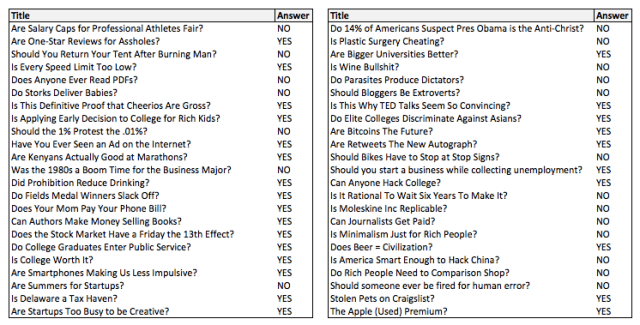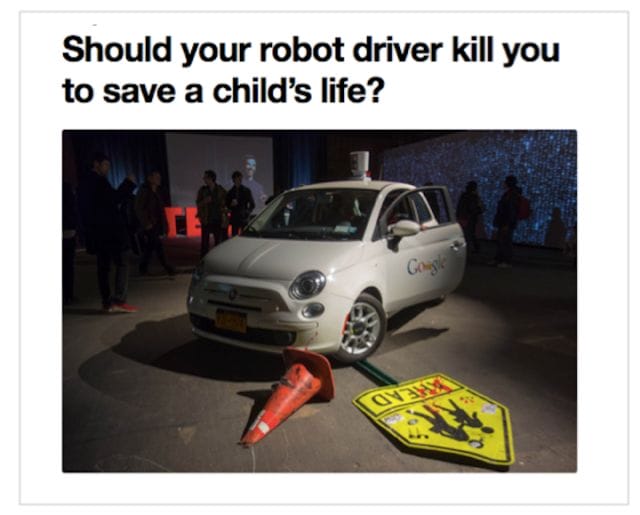“Any headline which ends in a question mark can be answered by the word no.”
– Ian Betteridge, creator of Betteridge’s Law
***
In 2009, TechCrunch published an article entitled “Did Last.fm Just Hand Over User Listening Data To the RIAA?” in which the author implied that the music site gave private data to record labels who were suing people for piracy. While the headline trumpeted a fairly serious allegation, the article itself contained little more than an unsubstantiated rumor (which was denied by all parties involved).
In response to this article, technology journalist Ian Betteridge published a trenchant observation. According to Betteridge, the title of the article was symptomatic of a journalism trend he had noticed: headlines that pose questions can usually be answered with the word “no:”
“One thing though: This story is a great demonstration of my maxim that any headline which ends in a question mark can be answered by the word ‘no.’ The reason why journalists use that style of headline is that they know the story is probably bullshit, and don’t actually have the sources and facts to back it up, but still want to run it.”
This observation — which isn’t an immutable truth, but still seems to hold some water — has now become known as Betteridge’s Law. It attempts to explain why some of the most ludicrous, over-reaching headlines are posed as questions that generally elicit a response of “no,” or “probably not:” Is this the cure for cancer? Do we finally have a solution to government debt? Is this this the new [insert shiny gadget] from Apple?

Probably not, Harvard Business Review.
Once aware of this observation, it’s clear how deeply it permeates the media. There is a Betteridge’s Law website that catalogues especially asinine examples of the technique, and even a Twitter handle dedicated to curating overstated headlines.
When we came across Betteridge’s Law, it piqued our curiosity: do our headlines at Priceonomics adhere to this theory? Can the majority of our question-posing headlines be answered with a resounding “no?”
Let’s see what the data says!
Analyzing the Headlines on the Priceonomics Blog

Typical Priceonomics link-bait pandering.
Since writing our very first post at the end of 2011, we’ve published 581 articles (a little surprising — it feels like we’ve written more than that). Of these posts, 131, or 22%, pose a question in the headline. Of these 131 headlines, only 46 ask questions that can be answered with a simple “Yes” or “No” — the rest are open-ended questions like “What Happens to Stolen Bikes?”).
We went through these 46 blog posts to figure out whether the answer was “Yes” or “No” (or more accurately, “Probably” or “Probably Not”). To be honest, we had to guess a bit: many of our posts maddeningly walk the line, and it was difficult for us to definitely lean one way or the other.
At any rate, here are our 46 posts with “Yes” or “No” question-based headlines, along with our best guess of what the answer is:

Contrary to what Betteridge’s Law would predict, 57% of the time we pose a question, the answer is actually “Yes.” And so, we can finally answer the question, “Does the Priceonomics Blog Follow Betteridge’s Law of Headlines?”
No.
This post was written by Rohin Dhar. Follow him on Twitter. To get occasional notifications when we write blog posts, sign up for our email list.




